Unprepared for the purposely darkened exhibit room, I groped my way down the gentle ramp and settled into a chair to view the Christ Trilogy, three floor-to-ceiling oil paintings by Mihály Munkácsy. Initially impressed by their sheer size, my reaction turned to awe as the spotlit canvases gradually emerged from the surrounding blackness. Christ Before Pilate, Ecce Homo, and Golgotha are the artist’s interpretation of the Passion of Christ from the 18th chapter of the Bible in the Gospel according to John. Painted in rich, almost lurid colors, the works are nothing less than mesmerizing.
It took Munkácsy nearly two decades to complete the series, as he conducted extensive research and made dozens of preparatory sketches for each painting prior to beginning work on the final canvases. He read the Bible several times, studied the clothing worn in the time of Christ, and took photographs of Jewish immigrants in traditional garb. Munkácsy even photographed himself bound with rope and hanging in order to accurately illustrate the musculature of a crucified body.
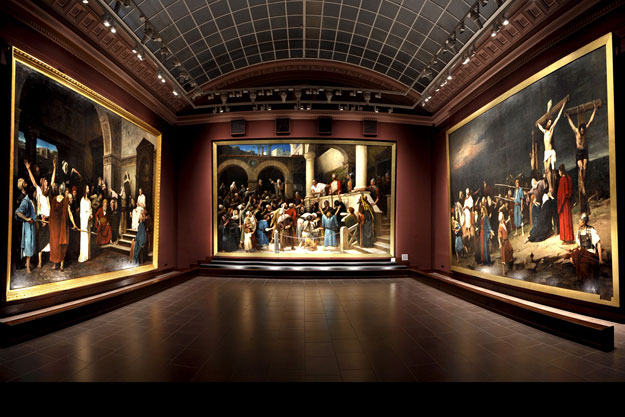
I made a slow circuit of the room, examining minute details of each painting. Expressions of love conflicted with pure hatred. Grief with joy. Dispassionate scholars debated points of law as Mother Mary collapsed into the arms of St. John. The guilty shrank before watchful soldiers and mothers held their children up to witness the judgment. The techniques utilized by Munkácsy: juxtaposition of dark and light, attention to dramatic facial expressions, and amplification of body language; exposed the spectrum of naked human emotions. I have never felt anything so powerful in the realm of religious art.
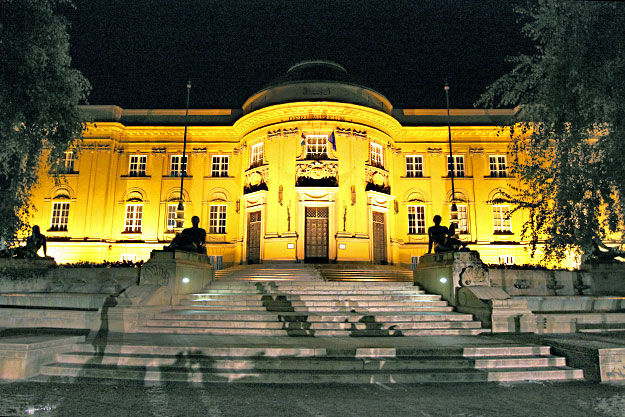
Surprisingly, this remarkable trio, along with a number of Munkácsy’s other works, hangs in the relatively obscure Déri Museum in Debrecen, Hungary. Located in the far eastern part of the country, this second largest Hungarian city is often overlooked as a tourist destination, overshadowed by the cosmopolitan capital of Budapest and the summer playground of Lake Balaton. However Debrecen has much to recommend it, and not just by way of art; it is an intriguing destination for anyone interested in unraveling the complex history of Hungary.
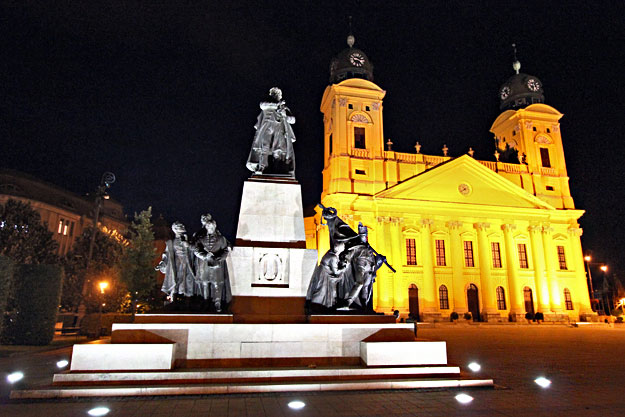
The city was originally settled by invading Hungarians who left their homelands east of the Carpathian Mountains at the turn of the 9th and 10th centuries and swept into the Carpathian Basin on the west side of the range. It grew rapidly during the mid-13th century Mongol invasion, as people deserted small villages for the security of the city, but suffered instability during the Ottoman period due to its location close to the border and a lack of fortifications. Astute diplomats courted the Ottoman Empire, Catholic European rulers, and even the prince of Transylvania, all of whom protected the city at one time or another. Exposure to such varied cultures resulted in a liberal populace that embraced the Protestant Reformation, earning it the nickname “Calvinist Rome.” Today the Calvinist Great Church that anchors one end of Kossuth Square in Debrecen is still considered to be the symbol of the Protestant Church in Hungary.

Eventually Leopold I, Holy Roman Emperor, fought off the Ottoman Turks and brought Hungary into the Habsburg dynasty as part of the Austro-Hungarian Empire, which lasted until Hungary revolted n 1848. Fearing reprisals, in April of the following year the revolutionary government fled from Buda (today Budapest) to Debrecen. Inside the Calvinist Great Church, citizens flocked around Lajos Kossuth, Regent-President of the Kingdom of Hungary, to hear him declare, “the house of Habsburg-Lorraine, perjured in the sight of God and man, had forfeited the Hungarian throne.” In honor of the historic event, Kossuth’s armchair is displayed inside the church and visitors can also visit the Reformed College Oratorium where the government in exile met.
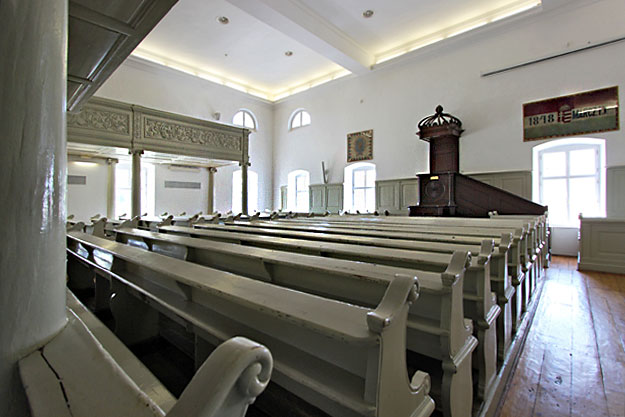
A century later, Debrecen suffered bombings in World War II that destroyed more than 50% of the buildings in town and severely damaged another 20%. Following the war, attempts to rebuild the town were thwarted by the new Communist government, which seized private property and public institutions alike. Fortunately, since emerging from the oppressive Soviet era, Debrecen has once again flowered. In addition to the Déri Museum, a second museum known as MODEM Center for Modern and Contemporary Art opened in 2006. The center has hosted exhibitions such The Real da Vinci exhibition, which drew more than 160,000 visitors in Florence and Tokyo. When I visited, its 30,000 square feet of space was filled with an intriguing photography exhibit and the center is currently working on their first ever exhibition of art from China. As a result, Debrecen is making a name for itself in the art community, drawing visitors from all over Europe to attend the 10-15 temporary exhibits they host each year.
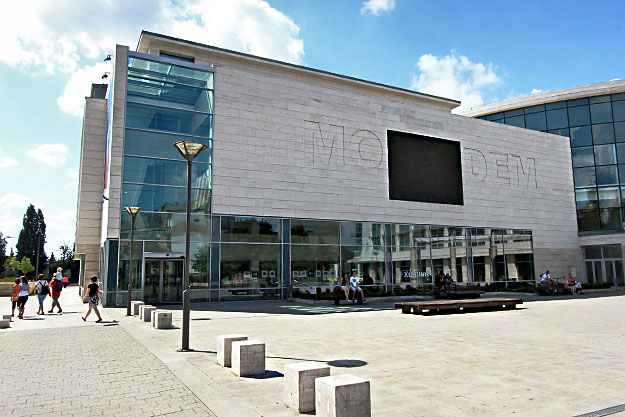
The more I saw of Debrecen, the more I liked it. By day I toured museums, visited the historic library at College of the Reformed Church, and enjoyed a walk through the Great Forest on the north end of town, which is home to an Aqua Park, Zoo, and Wellness and Spa Resort with thermal mineral water baths. By night I checked out Roncs Ruin Bar, furnished with an eclectic collection of chairs and tables rescued from the trash heap, and took my pick of the sidewalk cafes at Kossuth Square and Fish Seller Square.
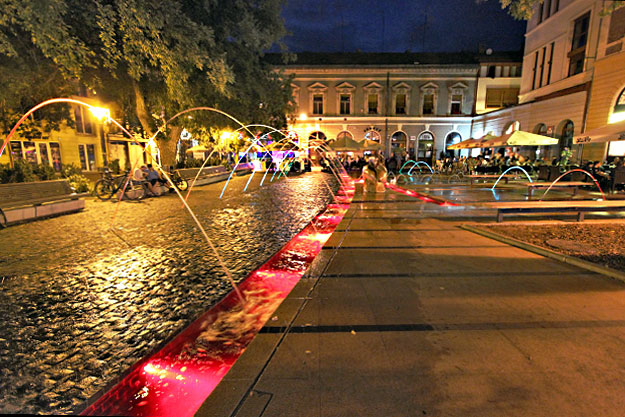
What’s more, the city is also home to a myriad of festivals, including the largest Flower Festival in Hungary, during which 100 million flowers decorate 600 floats; an international summer Jazz Festival; a biennial choir competition; Beer Carnival; Wine Carnival; and an International Military Band Festival. Debrecen may not yet on the tourist radar but with all it has to offer, it’s a hotspot destination waiting to happen.
Where to stay in Debrecen:
I stayed at Hotel Lycium (see photos below), ideally located on the same square as MODEM and just around the corner from the Déri Museum and Kossuth Square. Opened in 2006, this air conditioned hotel has 88 non-smoking double rooms and four suites. Amenities include Pay TV, movie channels, broadband Internet access, security safe, mini-bar, telephone, and hair dryers. Breakfast is included, and the breakfast buffet ranked among one of the best I’ve ever had, offering espresso, yogurt, fresh fruit, dried fruit, a cheese board, an array of breads and rolls, eggs, meat, oatmeal, and so much more. I also had two delicious dinners at their restaurant, which was affordably priced. Also on site is an indoor swimming pool, sink pool, jacuzzi, sauna, infrasauna, incense chamber, solarium, and a modern fitness center. Rates range from $100 to $300 per night, depending upon room and season.
Can’t view the above slideshow of Hotel Lycium in Debrecen, Hungary? Click here.
Disclosure: I was a guest of Debrecen Tourism during my stay in Debrecen, Hungary and my Eurail Global Pass, which I used for travel between Budapest and Debrecen, was provided by Eurail.com. However, the receipt and acceptance of complimentary items or services will never influence the content, topics, or posts in this blog. I write the truth, the whole truth, and nothing but the truth.

I have always wanted to go to a place like this. Exploring cultures and artifacts of different countries. I guess this should be added to my to go list.
Hi Wayne: If you’re anything like me, your list is getting longer and longer. Even though I travel perpetually, I keep discovering new places I want to see. But yes, Debrecen, and especially the nearby Hortobagy National Park, are both great destinations.
This is gold cast museum? Beautiful place, I want to personally experienced
Great post loaded with tips about what to see, thank you! I have to say that I particularly loved the image og the Calvinist Great Church and monument – the colour contrasts there are fantastic!
those buildings look like they are made of gold
Debrecen sounds like a splendid confluence of old and new, oozing history that seems alive, not musty. And being overlooked as a tourist destination seems more of a recommendation than a turn-off, ie fewer crowds.
Hi Terry: Of course, you are right! Thanks for pointing that out.